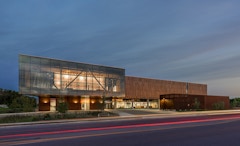
Two Sides to Sustainability & High-performance
High performance can be defined as “a building that integrates and optimizes all major high-performance building attributes, including energy

High performance can be defined as “a building that integrates and optimizes all major high-performance building attributes, including energy

Material flows of the fossil fuel industry, from exploration and extraction to distribution and combustion, are massive on a global scale. In 2019, the world produced approximately 80 million barrels of crude oil per day, with most being used as a feedstock for combustible fuels.


Building envelopes cover a considerable part of the urban exterior surfaces, and to therefore have a significant leverage effect on the climate

Today’s environmental challenges highlight the necessity of a holistic approach to façade design and construction, key to achieve the ambitious 2030
Today, there is a shift towards sustainable simplicity in facades, embracing material innovations and thermal design strategies for long-term

Johnson Controls (JCI), a leading provider of intelligent building technology solicited the design of a 35,000sm headquarters for its Asia-Pacific

Here’s the thing about the building SKIN: It is utterly unique in the built environment in separating the interior and exterior environments, balancing attributes of both appearance and performance in the process. It’s the gateway to resilience and sustainability goals in urban habitats.

Amidst a groundswell of both criticism and concern over the performance of the built environment the FTI has announced Facades Week: LA!, a weeklong series of events in Los Angeles celebrating the building skin as the lynchpin of resilience and sustainability in buildings and urban habitat.

This case study focuses on the solutions provided for the Bell Museum at the University of Minnesota. Our design team worked with the client to

The state-of-the-art of Additive Manufacturing (AM), popularly known as 3D printing, shows its prospective future in the